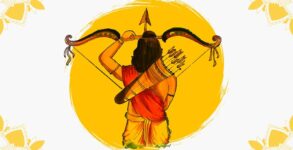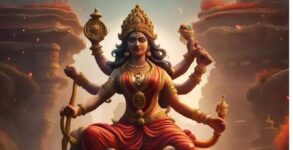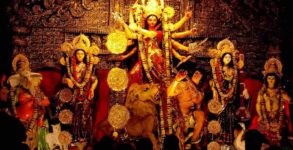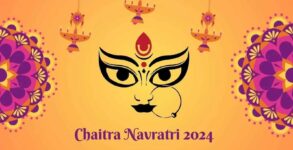Durga Puja 2023: The diverse cultural heritage of India needs no introduction. It is a place of colourful celebrations and variety. Every aspect varies from state to state, including festivals, cuisine, and languages. The beauty, though, is found in how many traditions and rituals bring individuals from all over the country together. The nation as a whole is characterised by a shared devotion to gods and goddesses. Durga Puja is one such holiday that has inspired festive preparations. Several cities are decorated with Durga Puja pandals and painted in the festival’s hues during this time.
The nine-day festival of Navratri, which honours Goddess Durga in her nine different manifestations, includes the Durga Puja. The festivities stand for the victory of light over darkness and the abolition of darkness. Despite their similarities, Navratri is observed in different parts of the country whereas Durga Puja is primarily observed in the East. Diverse practises are used by followers to worship Goddess Durga; some like to feast, while others fast.
Significance
The nine-day festival of Navratri honours Lord Rama’s victory over the Lankan evil king Ravana while also centering on the worship of the goddess Durga in her different manifestations. In a similar vein, Durga Puja honours Goddess Durga’s triumph over the demonic Mahishasura. According to Hindu mythology, Mahishasura was granted a blessing by Lord Brahma that prevented men or gods from killing him but allowed women to do so. Mahishasura, a demon, used this to his advantage to overthrow the gods and expel them from heaven. All the gods, including Lord Brahma, created Goddess Durga to put an end to these crimes. Mahishasura was victorious on the tenth day of their ten-day-long intense conflict with the holy Goddess. The tenth day is marked by Vijayadashmi or Dussehra celebrations.
Durga Puja 2023 Date
Navaratri this year runs from October 15 until October 23. On October 21, the four-day Durga Puja 2023 celebrations officially begin. Dussehra or Vijayadashami, which signifies the conclusion of the festivities, falls on October 24.
The streets of several towns are beautifully decorated in preparation for the holiday season to welcome the divine in all her splendour. The festive scene features a vibrant range of events. Majestic stages, elaborate pandal decorations, extravagant cultural festivals, late-night dancing, and cooking opulent meals for the devotees (bhog) are all a part of the jubilant celebrations. On the tenth day (visarjan), the idol of Goddess Durga is submerged in water in some states, signifying her return to the holy cosmos and to her residence with Lord Shiva in Kailash. On the other side, some states celebrate Dussehra by having people burn effigies of various demons, such as Meghanada, Kumbhkarana, and Ravana.
Durga Puja 2023: Kolkata’s Sree Bhumi Sporting Club to Showcase a Disneyland-Themed Pandal
Durga Puja 2023 Celebrations in Indian States
West Bengal
One of the most anticipated occasions in West Bengal is Durga Puja. About a month prior to the planned date, preparations for the arrival of Goddess Durga, who is frequently referred to as Maa or mother, start. Beautiful pandals and beautiful idols are erected at various locations throughout the state, while the streets of Kolkata are illuminated with intricate lighting during the night. The celebrations include thronging to Durga Puja pandals, dancing to the sounds of the dhak (a percussion instrument), and indulging in delectable bhog.
Sindoor Khela, where married Bengali women traditionally smear vermilion or sindoor on each other’s faces, is one of the most important activities commemorating the conclusion of the Durga Puja holiday. After saying goodbye to the Goddess (darpan visarjan), something occurs. Devotees immerse the idols in a body of water on this day, also known as Dashami, in anticipation of her reappearance the following year.
Bihar and Uttar Pradesh
Rituals for commemorating Durga Puja are the same in Bihar and Uttar Pradesh; in both states, young girls are fed on the final day of the puja (kanya pujan). For Goddess Durga, altars are raised, and the Durga Saptashati is recited in her honour as the greatest force.
Ramlila is used to commemorate Navratri in both states. It is performed all across the states on temporary platforms made especially for such performances as well as in theatres.
Gujarat
Gujarat’s most fervent worshippers of the goddess observe a nine-day fast in homage to her nine incarnations. Fasting women often worship an earthen vessel or garbo that has been adorned with diyas or earthen lamps. The pot is seen as a wellspring of shakti (power) and represents life within the womb.
Gujarati people know how to celebrate with vigour, from keeping fasts to performing the well-known Garba, a dance in which men and women circle the idol or garbo. They also end the Durga Puja celebrations by feeding the young girls and giving them gifts or money.
Chhattisgarh
When it comes to celebrating Navratri, the people of Chhattisgarh, notably the tribals of Bastar, go all out. The Bastar tribe celebrates for 75 days, ending the celebrations on the thirteenth day of the waxing moon, or shukla paksha.
The tribe also observes a celebration called Bastar Dussehra that dates back five centuries and involves the procession of the idols of Devi Maoli and her sisters from Bastar to the Danteshwari Temple in Jagdalpur.
Himachal Pradesh
Did you know that the Himachal Pradesh region starts its Navratri celebrations while the rest of the nation is finishing up?
At the Dhalpur Maidan in Kullu Valley, the northern state, Navratri is cheerfully and humorously observed. When people worship Lord Rama and other deities with lavish décor and reverent rituals, their devotion comes to life.
The Kullu Dussehra is another manner that the state celebrates Dussehra. On the Beas River’s banks, grass and wood are burned during this practise. The burning of Lanka or Lankadahan is symbolised by this. On this day, a massive procession is conducted out and deity statues are displayed to the Paddal ground while the entire valley is dressed up as a bride.
Karnataka
The state of Karnataka is well known for its Navratri celebrations, particularly in the city of Mysuru, often called Mysore.
Mysuru Dasara, the state festival of Karnataka, is celebrated with unparalleled splendour and adheres to the same rites that were practised under King Raja Wodeyar I in 1610. On Mahanavami, the ninth day of the celebration, the royal sword is venerated by being seated upon a throne. Later, the sword is carried out by a procession of elephants, camels, and horses.
At this time of year, the Mysuru Palace is a sight to behold. On Dussehra, it is adorned with thousands of lights and flowers. The day’s celebrations are also celebrated by the Jambo Savari, a large procession that bears Goddess Chamundeshwari, a Durga incarnation. Fairs are hosted all over the city, and the parade is conducted at the palace.
Andhra Pradesh
For Andhra Pradesh ladies, especially the unmarried ones, Navratri is a unique occasion. They pray to Goddess Gauri for the gift of a compatible mate. Bathukamma Panduga (Mother Goddess, Come Alive!) is the Telugu name of the celebration.
On the last day of the celebrations, women build flower stacks for the Goddess, only to submerge them in a body of water.
Tamil Nadu
Due to the devotion of three goddesses over the festival’s final three days, Tamil Nadu celebrates Durga Puja with triple the fanfare. The residents of the southern state offer gifts, sweets, and coconuts to family members as they worship Durga, Saraswati, and Lakshmi.
The Golu or Kolu ceremony is the focal point of the celebrations. According to the custom, young girls and women put family heirloom dolls and figurines (arranged in a stepwise fashion) on a tiny wooden platform. These dolls represent well-known myths, gods, and goddesses.
The rites also include Ayudha Puja. Goddess Saraswati is adored on this day, Mahanavami. Along with the goddess, things like machines, books, musical instruments, and cars are worshipped.
Kerala
Nine days of Navarathri, or “Navarathri” as it is pronounced in Kerala, are dedicated to celebrating Goddess Durga in her nine different manifestations. However, Saraswati, the goddess of knowledge and wisdom, is honoured on the final three days of the Hindu festival. These days, worship of practical instruments is a part of the rituals. In Tamil Nadu, it is known by that name, Ayudha Pooja. On this day, employees and students keep their respective tools and textbooks in the prayer area in their houses or temples.
Another unusual custom performed on Vijayadashami is Vidyarambham, in which young children’s tongues are inscribed with a mantra using a golden ring. The transfer of knowledge to a youngster is then symbolised by writing the same mantra on sand and rice spread out on a plate.


















